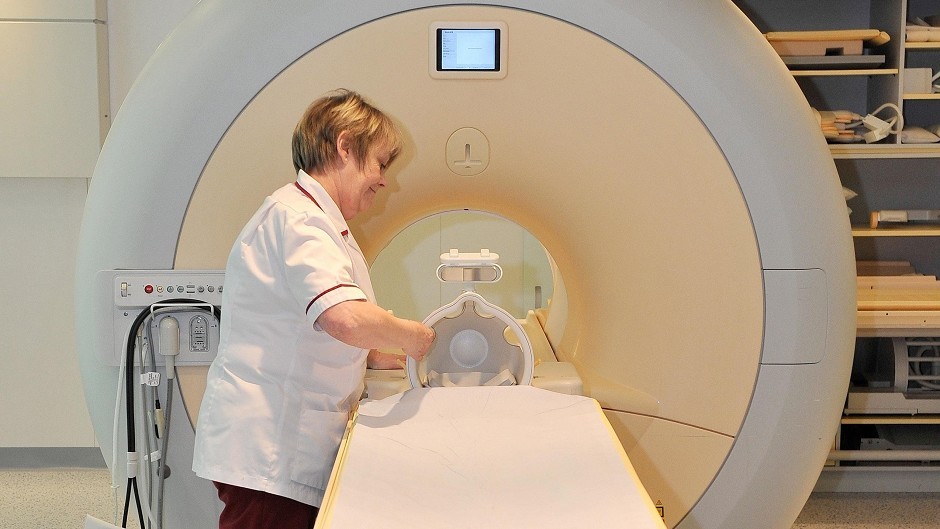The most advanced medical scanner in Scotland has been unveiled at NHS Grampian – by a former student of the man who invented the world’s first full-body Magnetic Resonance Imaging (MRI) device in Aberdeen in 1980.
The £2million Positron Emission Tomography (PET) scanner was officially launched by Professor Peter Sharp.
As a student, he learned from Prof John Mallard, who led the team that invented the very first full-body MRI and gave his name to the current imaging centre at Aberdeen Royal Infirmary (ARI).
Prof Sharp cut the red ribbon on the new machine, which will not only help the doctors and medical staff at ARI, but will also benefit the research of scientists from Aberdeen University.
The new scanner will provide extremely high definition 3-D images of the inside of patient’s bodies to enable more accurate diagnoses of various types of cancer and other diseases.
Speaking at the opening ceremony, Prof Sharp said: “Today we see the official opening of the replacement scanner for the one we bought in 2005, an indication of NHS Scotland’s ongoing commitment to the PET service.
“What PET enables us to do is examine the chemistry of what is happening in the body as well as the anatomy, and this gives us a new window onto cancer.
“It is very important both from a routine diagnosis point of view to find how far a cancer has spread in the body, and also from a research point of view, as it allows us to discover what drives cancer and how we can stop it.”
Prof Sharp insisted the new machine was money well spent.
“There are people who complain that the health service can ill afford to invest millions of pounds in this technology when other parts of the system are under strain,” he said.
“I once asked a young woman who had breast cancer and was undergoing PET imaging what she thought about this, and she said that to her being able to be investigated by new technology was very important, because it gave her hope.
“So I’m happy to announce the new opening of the new PET imager and the hope that it will bring to the thousands of patients in the north-east of Scotland.”










